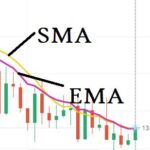Introduction
The Relative Strength Index (RSI) is one of the most popular and widely used momentum oscillators in technical analysis. Developed by J. Welles Wilder in 1978, the RSI measures the speed and change of price movements, helping traders identify overbought and oversold market conditions.
In this article, we’ll explore what the RSI is, how it works, and how traders use it to improve their trading decisions. We’ll also cover common RSI strategies and mistakes to avoid.
What is the RSI?
The RSI (Relative Strength Index) is a momentum oscillator that ranges from 0 to 100, typically calculated using 14 periods (days, hours, or candles depending on the chart).
- Above 70: Market is considered overbought
- Below 30: Market is considered oversold
- Around 50: Neutral or consolidation zone
The RSI helps traders determine whether a currency pair, stock, or asset is becoming overvalued (overbought) or undervalued (oversold), which may signal a potential reversal or correction.
How RSI is Calculated
The RSI formula involves calculating the average gains and losses over the past 14 periods, then applying the following formula:
RSI = 100 - [100 / (1 + RS)]
RS = Average Gain / Average Loss
While you don’t need to manually calculate RSI (as most trading platforms provide it), understanding the logic helps interpret it more effectively.
How to Read the RSI
1. Overbought and Oversold Conditions
- RSI > 70: The asset is potentially overbought — price may reverse down
- RSI < 30: The asset is potentially oversold — price may reverse up
However, overbought doesn’t always mean “sell now,” and oversold doesn’t always mean “buy now.” The RSI can stay in those zones for extended periods during strong trends.
2. Trend Confirmation
- RSI > 50 during an uptrend confirms bullish momentum
- RSI < 50 during a downtrend confirms bearish momentum
Traders often watch for RSI staying above 40–50 in an uptrend or below 50–60 in a downtrend as a sign of trend strength.
3. Divergence Signals
Divergence occurs when the price is moving in one direction and the RSI moves in the opposite direction.
Types:
- Bullish Divergence: Price makes a lower low, RSI makes a higher low → Potential upward reversal
- Bearish Divergence: Price makes a higher high, RSI makes a lower high → Potential downward reversal
Divergence is often seen as a powerful reversal signal when confirmed by other indicators or patterns.
Popular RSI Trading Strategies
1. RSI Overbought/Oversold Bounce
Setup:
- Buy when RSI crosses back above 30 (from below)
- Sell when RSI crosses back below 70 (from above)
Tips:
- Use with trend confirmation (e.g., moving averages)
- Avoid trading against strong trends
2. RSI + Support/Resistance
Setup:
- Identify key support/resistance zones on the chart
- Enter when RSI aligns with these zones (e.g., RSI < 30 at support)
This adds confluence and helps avoid false signals.
3. RSI Divergence Strategy
Setup:
- Look for divergence between price and RSI
- Confirm with trendline breaks or candlestick patterns
This method is especially useful for catching early reversals after extended trends.
4. RSI Trendline Breaks
You can draw trendlines on the RSI itself. A break of a trendline on the RSI often precedes a break on the price chart.
Best Timeframes to Use RSI
- Short-term (1H, 4H): More frequent signals, but more noise
- Swing Trading (Daily, 4H): Balanced for accuracy and signal strength
- Long-term (Daily, Weekly): Stronger trends, fewer signals, better for position trading
The RSI adapts to all timeframes but should be tested within your strategy.
Common RSI Mistakes to Avoid
- Assuming Overbought = Sell Immediately
– RSI can stay overbought for long periods in strong uptrends. - Ignoring Market Context
– Always combine RSI with price action or support/resistance for better accuracy. - Not Adjusting RSI Periods
– Try testing with 5, 9, or 21 periods for different results depending on your style. - Using RSI Alone
– RSI is best used with other tools (like moving averages, MACD, chart patterns).
Tips for Using RSI Effectively
- Look for RSI divergences at key levels.
- Confirm RSI signals with volume and price structure.
- Use RSI zones (40–90 in uptrend, 10–60 in downtrend) for better analysis.
- Backtest RSI strategies before live trading.
Conclusion
The Relative Strength Index (RSI) is a versatile tool that helps traders understand momentum and identify potential reversals. By learning how to properly read RSI levels, spot divergences, and combine it with other elements like price action and support/resistance, traders can significantly improve the quality of their entries and exits.
Remember, no single indicator is perfect. RSI is powerful when used as part of a complete trading system with clear risk management.


